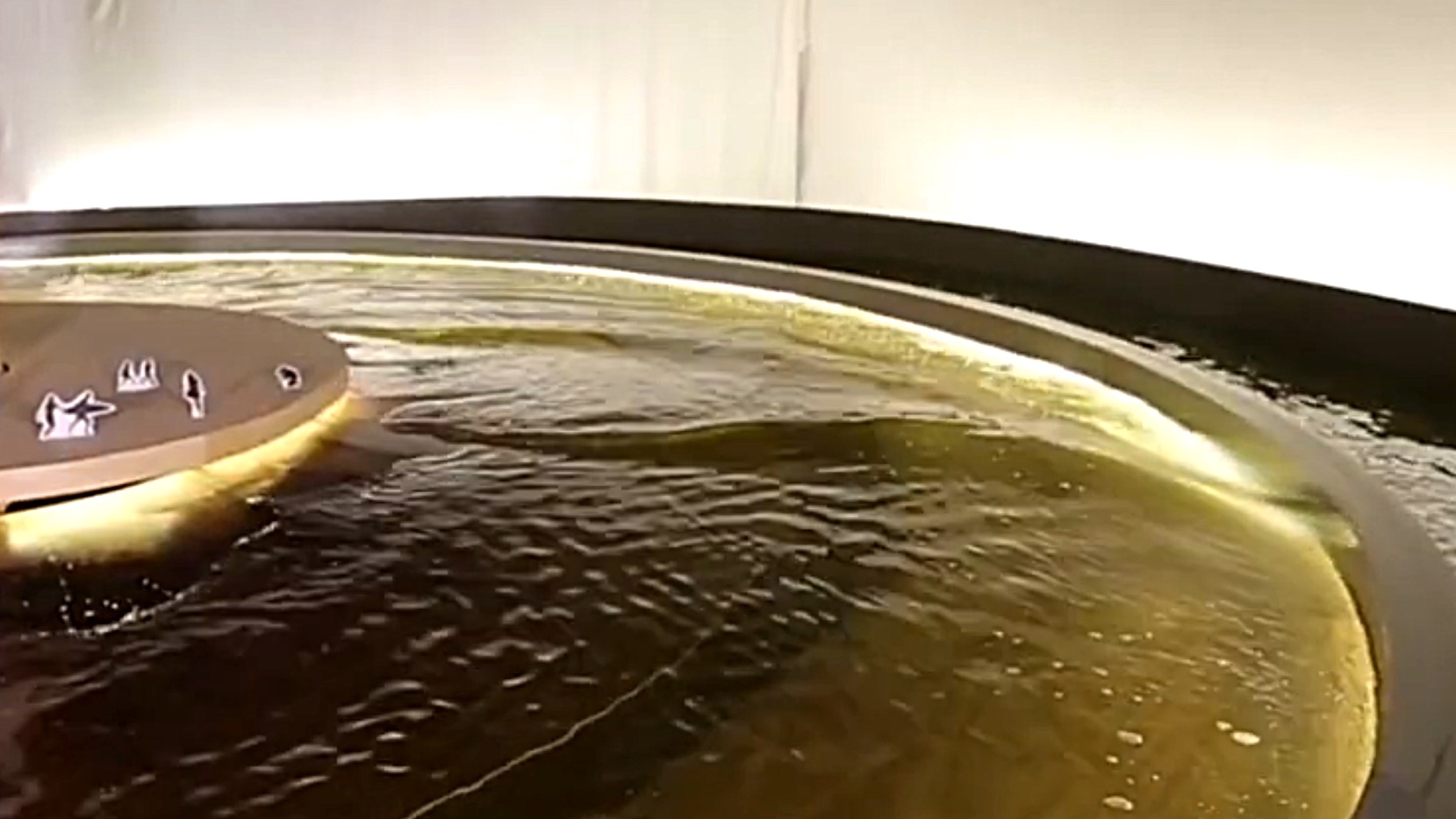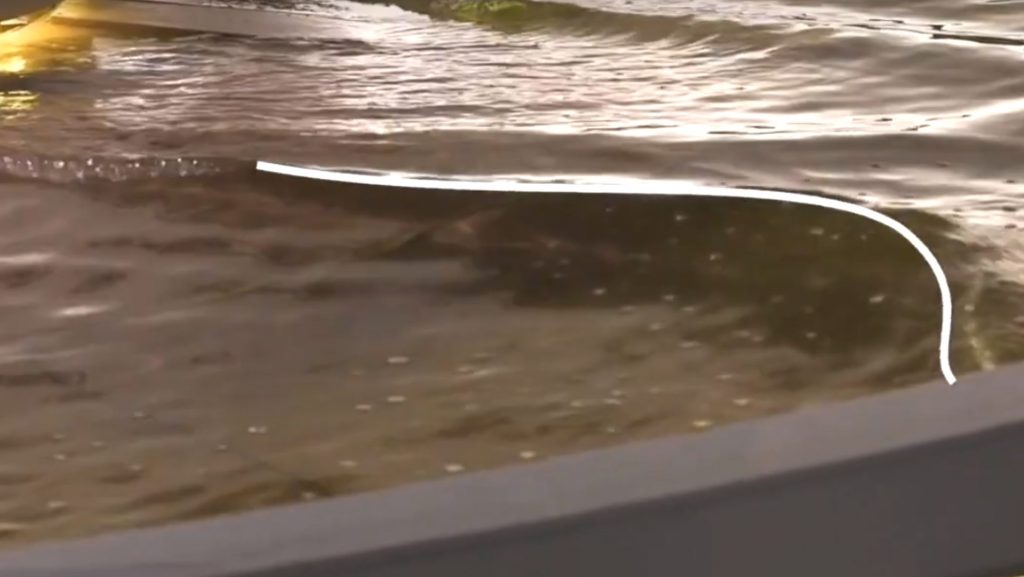First images of Okahina Wave technology revealed

The wave pool world has long been stunned by the unique properties of the Okahina Wave system. Artist renderings show a circular system spitting out endless rides. Many have pointed out that you can make anything look surf-able in an art mock-up. The recent video of Okahina Wave’s proof-of-concept only raises more questions.
In the clip by news outlet Paris Match we see a small scale test wave working in an enclosed warehouse. It is unclear whether the small wave generated from the center hub of the device is meant for surfing, or if the wave refracted off the outer wall is the surf-specific point of the pool. What we do learn is that the machine generates a 45-50 second ride and produces a wave every 10 seconds.
Okahina Wave told Paris Match they can do extremely large custom sizes or any one of three standard sizes:
– 40 meters (130 feet) in diameter which produces 80 cm to 1.3-meter waves (2.5-to-4 feet)
– 60 meters (200 feet) in diameter which produces 80 cm to 1.6-meter waves (2.5-to-5 feet)
– 110 meters (360 feet) in diameter which produces 80 cm to 2-meter waves (2.5-to-6.5 feet)
Okahina Wave has said from the get-go that they are an eco-alternative to concrete-wave pools. Their system floats and can be deployed in ‘dead’ water spaces. The plan is that wave action will aerate the water and the oxygenation will see fish and plant life return. Developer Laurent Hequily told Paris Match that Okahina Wave can be assembled and disassembled in just a few weeks. He insists it is the first ecological wave pool in the world, which is a key point in a country where national protests routinely bring the country to a standstill.

Many would-be wave pool developments have struggled to move beyond this eco-sticking point. At Saint-Père-en-Retz near Nantes, protesters set up encampments on nearby farmland saying the planned facility would hasten France’s dwindling agricultural land. In St. Jean de Luz to the south, Quiksilver and the Boardriders group face stiff opposition to building a Wavegarden Cove and hotel facility. Most recently Surfrider Europe, based in France, aired an official proclamation opposing wave pool development. Surfrider US has no official position on wave pools and most recently Surf Ranch Pro (a WSL charity event) winners Coco Ho and Felipe Toledo donated their $10K in winnings to Surfrider’s LA chapter.
Hequily says that water and energy consumption is massive in the current crop of wave pool designs, but that Okahina skirts this by using existing spaces.
“Our system floats on ballasts, and we generate the waves from there,” said Hequily. “Other systems push water, and that takes a lot of energy. The challenge was to find a physical process that consumes significantly less.”
He added that it takes 35 kW of power to generate a wave of 1.20meter wave (4 feet) and that sites will be equipped with photovoltaic tiles made in France.
Related Coverage
